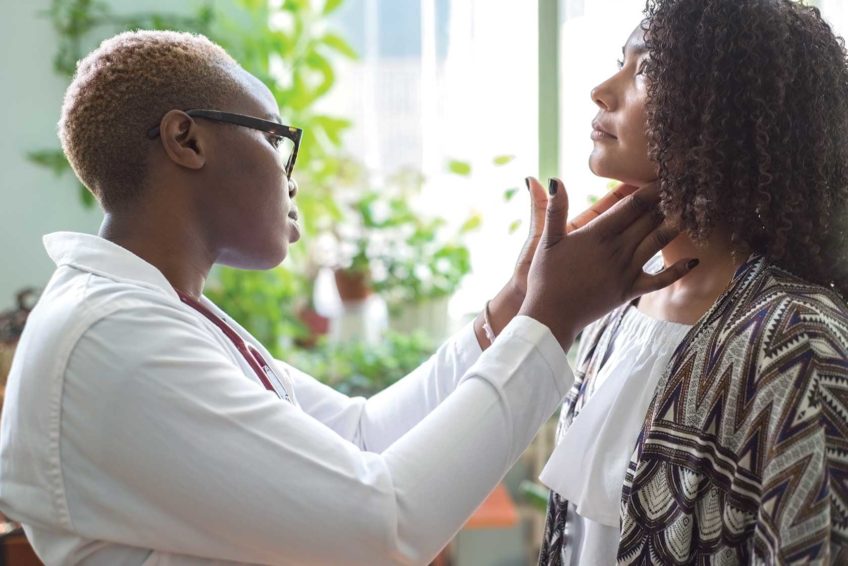
You would think that a woman’s heart is just a smaller version of a man’s. And in some ways it is. It has four chambers and is nourished by a network of arteries. But a closer look can show some differences. “The arteries are smaller and tortuous (curly),” explained Dr. Malissa Wood, co-director of the Corrigan Women’s Heart Health Program at Massachusetts General Hospital.
That can cause problems in diagnosing a heart attack. The tools used were designed for larger arteries, and may not pick up subtle changes in a woman’s heart. That is often why women get an OK sign but a heart attack is still lurking.
MINOCA
Even more confusing is that plaque is not always the cause of a woman’s attack. Women are more susceptible to an unusual form of heart attack referred to as MINOCA (myocardial infarction with non-obstructive coronary arteries). These women tend to be younger and non-white, according to the American Heart Association, and less likely to have traditional risk factors.
Instead of a buildup of fatty deposits, the attack is attributed to a spasm or tear in an artery. In some cases small deposits of plaque exist, but cause erosion or irritation of an artery rather than blockage, and escape notice.
The cause of MINOCA is not well understood. Hormones, stress and depression are possible contributors. Broken heart syndrome may also be to blame. This is a temporary heart condition brought on by extreme emotions or a stressful situation, such as serious illness or surgery.
The cause may be atypical, but the impact is the same. A study published in Circulation found that women with MINOCA have a similar risk of death as those with more common types of heart attacks.
Correctly diagnosing women can be tricky. EKGs do not always tell the story. If symptoms come and go, the test can be normal. Cardiologists additionally rely on the patient’s history and symptoms and the result of a blood test. Troponin, a protein, is released in the blood during a heart attack.
Not the same
Men and women share the same risk factors of a heart attack, but some take a heavier toll on women. For example, diabetes in women poses a greater risk than it does in men. Smoking is even worse, especially when combined with birth control pills. “This is a dangerous combination regardless of age,” Wood said. “Women are at increased risk of blockages in the arteries.”
Even the symptoms of heart attacks are different. Although both men and women complain of chest discomfort or pain, women may experience more pain in the back, jaw or neck, shortness of breath, nausea or excessive fatigue. Symptoms can appear at rest or be precipitated by emotion. Be aware of a discomfort you’ve never felt before, advised Wood.
Black women
According to the Office of Minority Health, Black women are more frequently diagnosed with hypertension, diabetes and obesity – all significant risk factors of heart disease. In addition, lupus, an inflammatory disease, is more common among Black women. Lupus is linked to kidney damage but inflames the heart as well. It changes the biology of blood vessels, and can cause the buildup of plaque. The heart muscle gets scarred.
But it’s the aftermath of heart attacks that’s worrisome. Within a year of a first attack 10% to 31% of Black women will die, depending on age. Within five years up to 64% of Black females will die or be diagnosed with heart failure or a stroke. Lack of awareness is partly to blame. According to the AHA, only 36% of Black women know that heart disease is their greatest health risk and only one in five believes she is personally at risk. More concerning is that only 58% are aware of the symptoms of a heart attack.
Nature’s stress test on the heart
When Wood refers to the miracle of birth, she means it literally. Pregnancy causes a dramatic rise in blood flow and additional workload on the heart. In addition, some women – although previously healthy − experience a temporary spike in blood pressure called preeclampsia, or elevated blood sugar levels referred to as gestational diabetes.
Generally, both conditions go away after childbirth, but their impact can linger. The American College of Cardiology has found that preeclampsia doubles the risk of a heart attack in the future and quadruples the risk of high blood pressure. In addition, pre-term births, defined as before 37 weeks of pregnancy, are associated with cardiac deaths later in life.
It’s important to be on the look-out for specific signs of heart disease. They are often overlooked as the remnants of delivery. Symptoms may include heart palpitations, chest pain, high blood pressure, shortness of breath, dizziness, fatigue or swollen feet. The maternal death rate for Black women is 2.5 times that for white women and three times the ratio for Hispanic women.
“Cardiac problems are the number one cause of maternal deaths,” said Wood. “This is an absolute health crisis.”
Advocate
Yale School of Public Health found that roughly 50% of young women who report symptoms of a heart attack are more likely to have them dismissed. The doctors may not be familiar with the unique symptoms and instead diagnose acid reflux.
Keep pushing until you get the right answer, advised Wood. “Stick up for what you think.”







